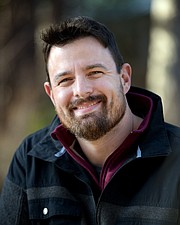Deep Dive Into the Flathead Lake Bio Station
It always happens about this time of year. When the halls are fully decked and the wonderland appropriately wintered, my mind meanders through an egg-nogged haze into the annals of the past, and I can’t help but think about all the relationships that I’ve, for reasons I can’t fully comprehend, slowly let slip away.
What a bizarre phenomenon that is, the unintended division of companionship. One day there you are, sharing some aspect of your life with someone you consider to be a friend. Maybe they’re just a colleague, a neighbor. Or maybe they’re something more. Whoever they are, whatever role they play, you value this person. Your life is all the more vibrant with them by your side.
And then, one day, all of that changes. Can’t really put your finger on why…it’s almost as if an invisible barrier has emerged somewhere along the way, when neither of you were looking, and the harder you work to break through that barrier the stronger and more impenetrable it becomes.
Last year, about this time, we talked in this column about the stratification that occurs in Flathead Lake during the warm summer months. The lake essentially separates into a sun-heated surface layer and the frigid deep waters below, with the thermocline acting as an invisible thermal barrier, dividing the lake in two. Though stratification is a natural occurrence in most lakes, recently scientists have been wondering: What is happening to the thermal structure of lakes with changing climate?
Now, in a study recently published in Nature’s Scientific Reports, FLBS lake ecologist Shawn Devlin joined a global team of researchers to investigate that very question (see our Outreach News Blog on our FLBS website for more information). Compiling the most comprehensive data set to date of long-term summertime vertical temperature profiles in more than 100 lakes all over the world, researchers found consistent, significant increases in surface water temperatures across lakes, while overall changes in deep water layers were minimal yet highly variable.
What does that mean for us in the Flathead? According to Devlin, surface water temperatures of Flathead Lake have risen significantly over the past 25 years. However, the lake on the whole is able to offset this rise with a large deep water layer that is consistently cold due to a steady inflow of snow melt and glacial runoff. At first this sounds like a good thing. If overall lake temperatures aren’t changing much, why does it matter if the differences between the two layers are growing more extreme?
Truth is, the implications could be quite dire for lake ecosystems. Larger temperature differences between the deep water and surface water layers make for a stronger stratification. The stronger the stratification, the stronger and more robust the thermocline, which can prevent the movement and exchange of materials and organisms between surface and deeper waters. This can greatly impact the ecology of a lake by creating nutrient imbalances, modifying critical oxygen levels throughout the lake, and altering fish communities and production.
Ultimately, Devlin’s global lake study uncovered more questions than answers. To fully understand what all this means for our lake ecosystems, there needs to be additional research, collaboration, conversation. It will take people working together to reveal the causes and effects of this thermal separation, and what—if anything—can be done to return things to a less divided and more sustainable state.
Early this morning, well before anyone else in my house was awake, I went to the window and looked out at Flathead Lake. Even in the dark, you can feel it there. Expansive. Steady. Adorned along its shores by cozy houses wrapped in festive, shining lights. There is no thermocline in that water now. The barrier of the long and unprecedented summer of 2020 has slipped away, and as I stood there, lost in the past of failed friendships and prospects of what might’ve been, a single question arose: Is it too late to give them a call?
I think I know the answer to that question, and the reality of that answer is what this time of year is all about. From all of us at the Bio Station, wishing you a safe, happy, and healthy holiday season. We’re so grateful for our time together in these columns, and can’t wait for all the wonderful opportunities that await is in 2021.


